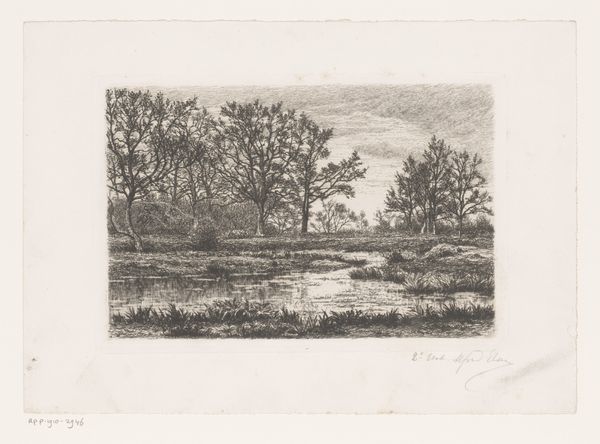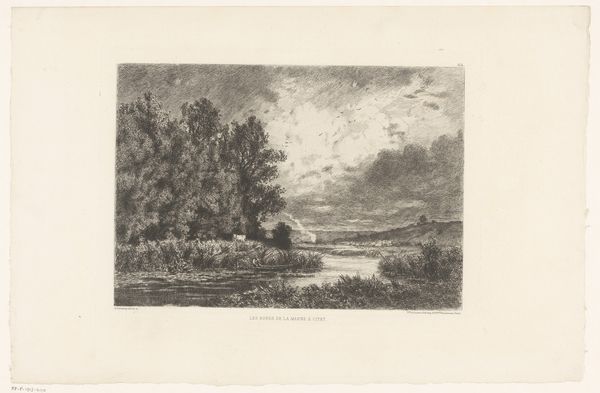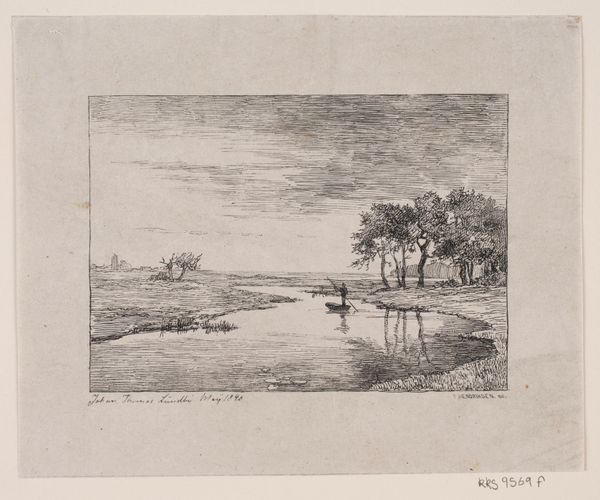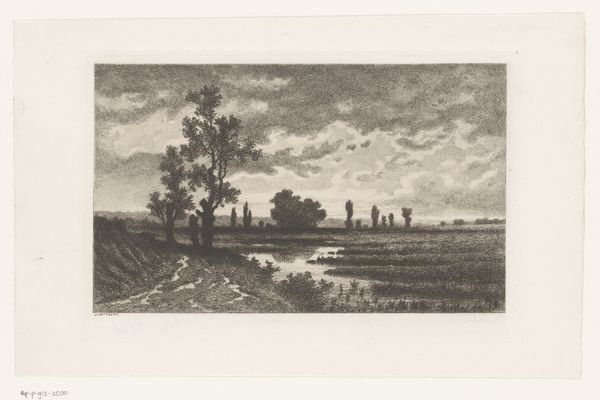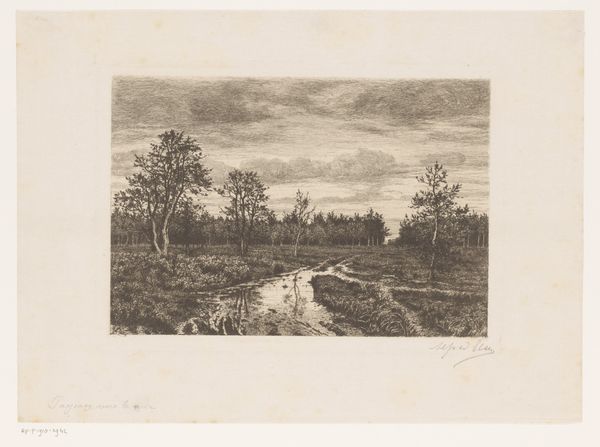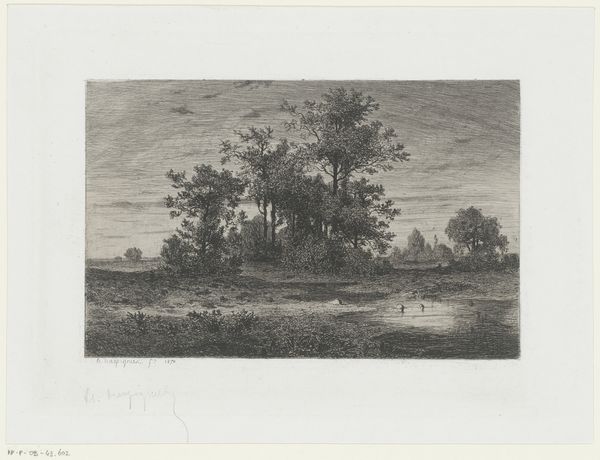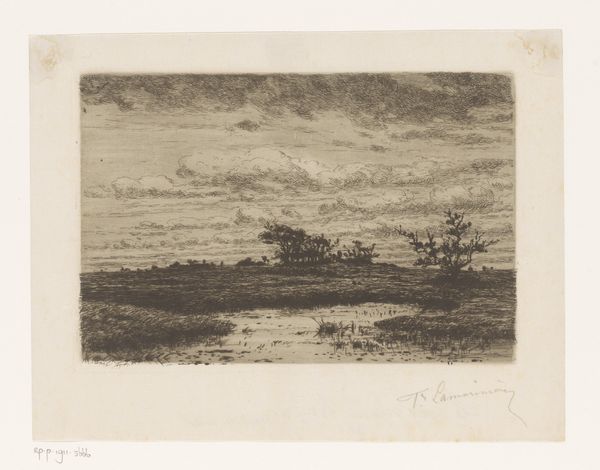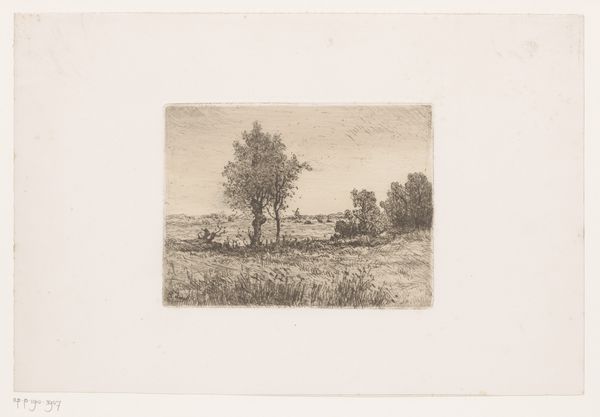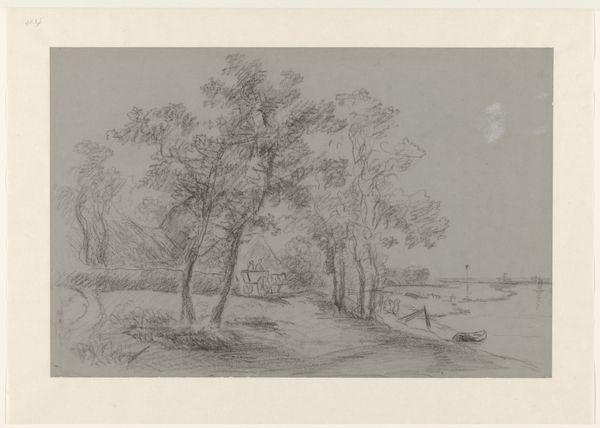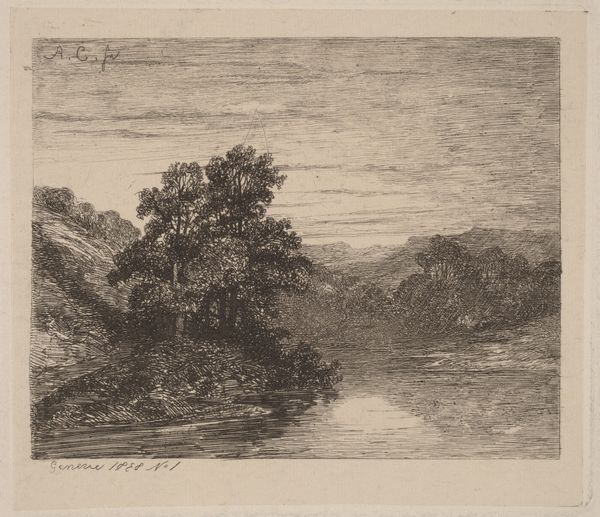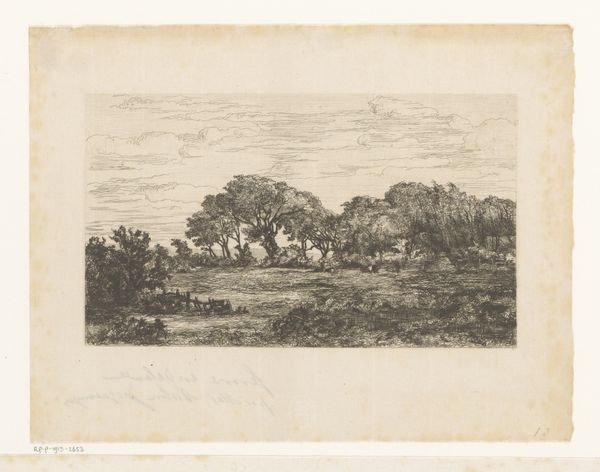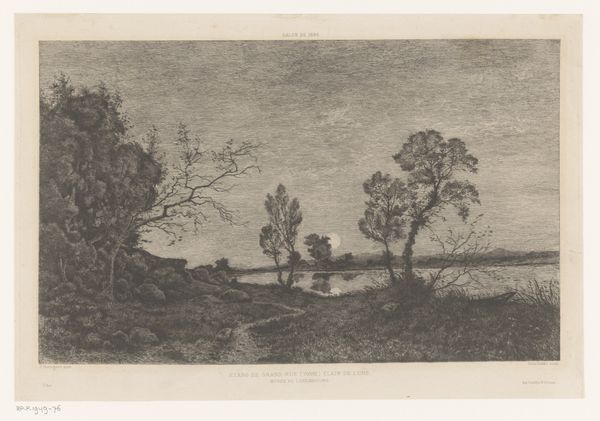
print, etching
# print
#
etching
#
landscape
Dimensions: height 180 mm, width 251 mm
Copyright: Rijks Museum: Open Domain
Editor: Here we have Emilie Rolin-Jacquemijns' "Veenlandschap bij Hoogstraten," a landscape etched sometime between 1852 and 1906. There’s something quite melancholic about the scene…the somber sky, the still water, and those lonely trees. What do you see in this piece? Curator: Well, as a historian, I immediately consider the context in which Rolin-Jacquemijns was working. Landscape art during this period was often deeply connected to ideas of national identity and the romanticization of nature. The public exhibitions of these artworks served a social purpose: to remind audiences about the value of preservation. Where do you think this fits? Editor: Hmm, that’s interesting! It makes me think of other landscape paintings in the Romantic style, but this feels less grand, less overtly nationalistic somehow. It’s more intimate. Perhaps that's something specific to Rolin-Jacquemijns' printmaking and the smaller scale. Curator: Precisely. Consider the accessibility of prints. Were they mainly enjoyed in a gallery, or would most have seen it in domestic spaces? Her choice of etching makes this landscape more widely available than, say, an oil painting. This accessibility shapes the artwork's public role. Who would she have imagined viewing it? Editor: I guess a much wider audience. Perhaps middle-class homes wanting a piece of that romantic landscape but without the budget for original paintings? It feels less like a grand statement, more of a personal reflection. Curator: Exactly! It’s a glimpse into the everyday aesthetic experience and the democratization of art through printmaking. And the “melancholic” feel you mentioned might be inviting a more thoughtful public sentiment as well, not only patriotic but about environment preservation in general. Editor: I never thought about prints that way! It's given me a whole new appreciation for understanding not just what's *in* the art, but how it circulated and who had access to it. Curator: Indeed. Considering the social life of art enriches our understanding of its meaning and impact across diverse publics and times.
Comments
No comments
Be the first to comment and join the conversation on the ultimate creative platform.
